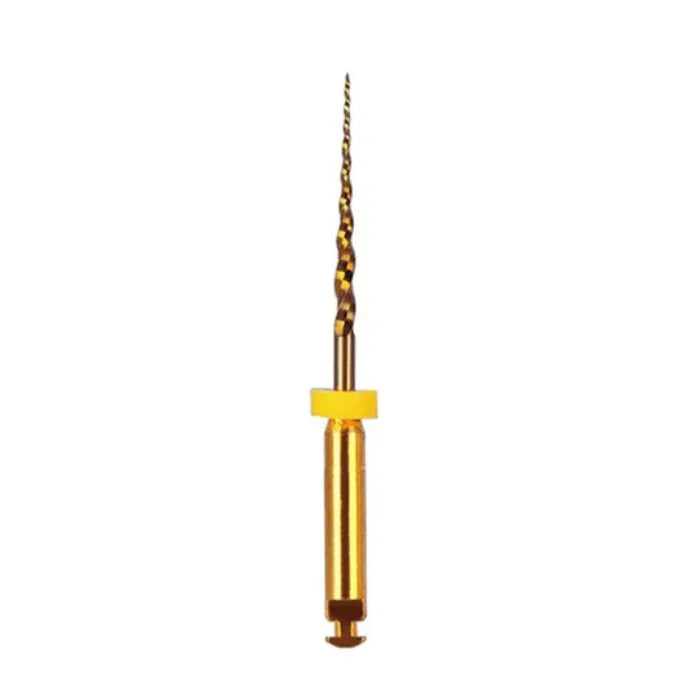In modern dentistry, innovation and precision are at the heart of successful treatments. Among the most significant advancements in endodontics (root canal therapy) is the rotary file system. This powerful tool has transformed the way dental professionals perform root canal treatments, offering greater efficiency, accuracy, and patient comfort compared to traditional hand files.
But what exactly is a rotary file? How does it work, and why has it become a standard instrument in dental practices across the UK and around the world?
Let’s explore the essential role rotary files play in endodontic procedures.
What is a Rotary File?
A rotary file is a specialised dental instrument used during root canal treatments to mechanically shape and clean the root canals of a tooth. Unlike traditional hand files, which rely on manual movement, rotary files are powered by an endodontic motor. They are typically made of nickel-titanium (NiTi), a material known for its flexibility and resistance to fracture.
These files are designed to navigate the complex anatomy of root canals with greater ease and precision, allowing for thorough cleaning and shaping of the canal system while preserving the structural integrity of the tooth.
Why Rotary Files Are a Game-Changer
1. Increased Efficiency
Rotary files significantly reduce the time it takes to clean and shape the root canal. Where traditional hand files might require a slow, manual process with multiple file sizes, rotary files use a more streamlined approach, often involving fewer steps. This can mean shorter appointment times for patients and increased productivity for dental practices.
2. Improved Accuracy
Because of their flexible NiTi construction and motor-driven motion, rotary files are better suited for following the natural curvature of root canals. This helps prevent procedural errors such as ledging, transportation, or perforation—risks commonly associated with rigid hand files. The result is a more predictable and safer treatment outcome.
3. Patient Comfort
Faster procedures with fewer complications contribute to a better experience for patients. Rotary instrumentation tends to be smoother and quieter, reducing anxiety and discomfort often associated with lengthy root canal procedures.
Components of a Rotary File System
A typical rotary endodontic system includes:
-
Endodontic Motor: A device that controls the speed and torque of the rotating file.
-
Rotary Files: Made of NiTi alloy, these come in various tapers and lengths to match the tooth’s anatomy.
-
Irrigation System: Used to flush out debris and disinfect the canal during instrumentation.
-
Electronic Apex Locator (optional): Helps determine the working length of the canal.
There are several brands and systems available, including ProTaper, WaveOne, Reciproc, and HyFlex, each with its own file design and motion strategy (continuous rotation vs. reciprocating motion).
Rotary vs Hand Files: Key Differences
| Feature | Rotary Files | Hand Files |
|---|---|---|
| Operation | Motor-driven | Manual |
| Material | Nickel-titanium (flexible) | Stainless steel (rigid) |
| Speed | Faster | Slower |
| Precision | High | Moderate |
| Risk of Canal Damage | Lower due to flexibility | Higher with curved canals |
| Patient Comfort | Better | Can be less comfortable |
Common Concerns and Limitations
While rotary files offer many advantages, they are not without challenges:
-
Instrument Separation: One of the primary concerns is the risk of file breakage within the canal. This usually occurs due to excessive stress, improper use, or metal fatigue. Proper training and adherence to manufacturer guidelines help minimise this risk.
-
Cost: Rotary systems can be more expensive than hand instruments, both in terms of the initial investment in the motor and the ongoing cost of disposable files. However, many practices find that the benefits—such as reduced chair time and improved outcomes—outweigh the costs.
-
Learning Curve: Dentists must undergo proper training to master rotary instrumentation. Incorrect usage can lead to procedural errors.
The Future of Endodontics
Rotary files represent a key part of the ongoing evolution in dental technology. As materials science and engineering continue to advance, we can expect even more flexible, durable, and intelligent file systems. Some systems now integrate reciprocating motion to further reduce stress on the files and the tooth structure.
Digital integration is also on the rise, with smart motors that automatically adjust torque and speed based on the resistance encountered in the canal.
Final Thoughts
Rotary files have brought a new level of precision, safety, and comfort to endodontic treatment. For dental professionals, they offer a faster, more predictable way to clean and shape root canals. For patients, they mean a smoother experience and better long-term results.
If you’re a patient considering root canal therapy, it’s worth asking your dentist if they use rotary instrumentation. And if you're a dental professional not yet using rotary systems, now might be the perfect time to explore this transformative technology.
Whether you're working in an NHS practice or a private clinic, incorporating rotary files can elevate the standard of care you provide—and that’s something worth smiling about.
Let me know if you'd like a version optimised for SEO, patient-facing content, or continuing professional development (CPD) use.
- Get link
- X
- Other Apps
- Get link
- X
- Other Apps
Comments

yes
ReplyDelete